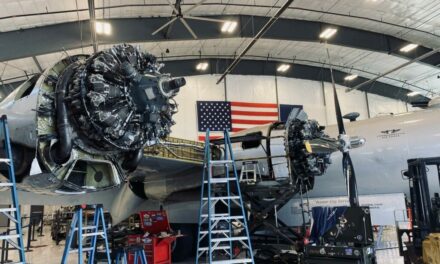The Zen of IFR
Air Facts Journal
In John Zimmerman’s thought-provoking article, “What Matters For IFR Proficiency? The Answer Is Quite Simple.”, he highlights that deficiencies in basic instrument flying skills was the probable cause of a lot of accidents in IMC – not the weather, not the airplane, but the pilot, who simply got overwhelmed and lost control. He ultimately concludes that the best way to stay proficient then, all things being equal, is to practice flying in IMC (real or simulated) to ensure you can minimally meet the ACS standards for basic attitude instrument flying.

In John’s article, he ultimately concludes that the best way to stay profiienct is to practice flying in IMC.
Yet there is a certain underlying theme that permeates both John’s article and the many reactions to it that for whatever reason never really gets fully articulated, and it’s this: Instrument flying is just as much a way of life as it is a skill.

For professional pilots, their high cadence of flying coupled with constant recurrent training ensures proficiency.
And that’s why professional pilots, as John pointed out, are statistically safer flying in IMC than their GA counterparts; their high cadence of flying coupled with constant recurrent training not only ensures proficiency, but develops a certain state of mind when they fly – a “zen” if you will. In turn, they don’t see their instrument skills atrophy to the point of calamity nearly as fast as GA pilots do.
Putting it in less mystical terms, everything from their scan to even how they brief an approach is ingrained as behavioral norms and executed out of habit not concerted thought. And if you have any pro pilot friends like I do, I highly suggest flying with one of them and witnessing it for yourself first hand. It’s pretty obvious.
That begs the question then: How can an average GA pilot like me who flies around hundred hours a year stay proficient? The answer is quite simple (well, maybe): I incorporate some aspect of IFR flying into every single flight. Every single one.
That means hand flying to within or better ACS standards. That means filing to those hamburger runs in order to practice my CRAFT and phraseology. That means flight planning a VFR flight like an IFR one by reusing Victor airways and programming along track waypoints for descent planning. That means occasionally flying the green needle instead of the magenta one. And in warmer months, it means seeking out destinations with blue or red dots on them, while in colder ones, relying instead on my home sim to do the same. You get the point.
All of the above isn’t me trying to convince you I’m a competent IFR pilot. Instead, it’s to showcase that staying instrument proficient is more akin to a lifestyle choice than a matter of just getting my six HITS in; every single flight is conducted through an instrument flying lens as part of my never-ending battle against weekend warrior rust.
And it is in this aspect that I think a lot of articles about instrument proficiency get wrong: Instrument flying isn’t some kind of switch you turn on because of low ceilings or visibility. It’s a state-of-mind you’re constantly in no matter the conditions. In other words, having your instrument rating doesn’t make you a better pilot because you can read an approach plate or fly partial panel (yet another skill I don’t practice nearly enough), rather, it’s because in order to stay proficient, you need to execute your rating on every single flight – just like the pros do.

In order to stay proficient, you need to execute your rating on every single flight – just like the pros do.
Coming full circle: Is the answer to IFR proficiency really that simple? I don’t know. What I do know is that for the overwhelming pilots I talk to, instrument proficiency is not even worth the effort. Most, if not all of their flights are for the scenery and/or the company, neither of which they feel can be truly enjoyed in the soup. For me however, the answer lies somewhere in that personal commitment I’ve made to myself to execute some aspect of my rating on every single flight in order to stay sharp and be the best pilot I can be. Of course, your nautical mileage may vary. Caveat emptor.
The post The Zen of IFR appeared first on Air Facts Journal.




